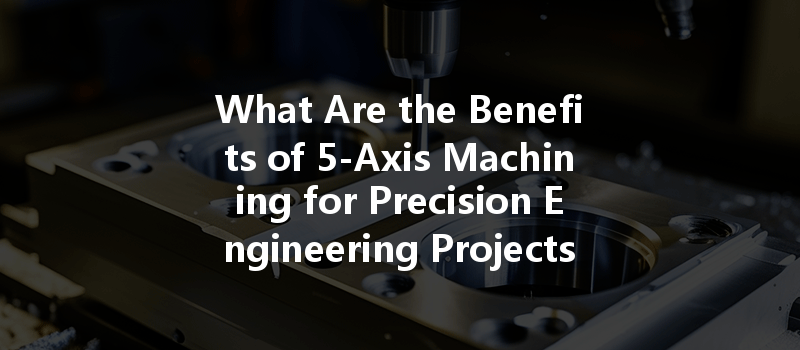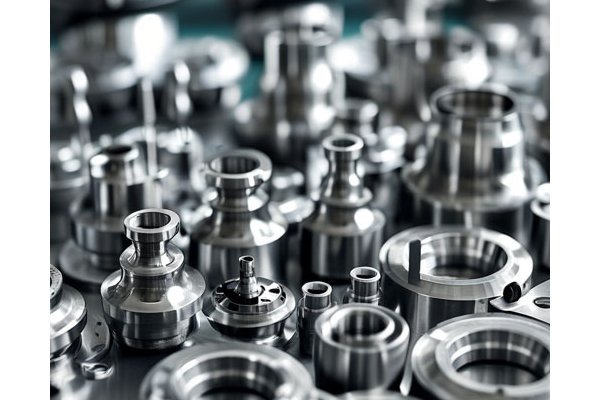Did you know that 5-axis machining can significantly increase the complexity and precision of manufactured parts while reducing production times by up to 75%? As industries, ranging from aerospace to healthcare, become increasingly reliant on intricate components, understanding the advantages of 5-axis machining is essential for engineers, manufacturers, and decision-makers alike.
In today’s rapidly evolving manufacturing landscape, precision engineering is at the forefront of innovation and development. Companies are often tasked with producing high-quality, complex parts that fulfill stringent specifications. One of the leading technologies to meet these demands is 5-axis machining, a process that advances traditional machining techniques into a new era of efficiency, accuracy, and versatility.
This blog will explore the benefits of 5-axis machining in depth, addressing its implications for precision engineering projects. From understanding the basics to learning about advanced applications, cost implications, and real-world case studies, we aim to provide a comprehensive overview of why 5-axis machining is not just a trend but a necessity in precision engineering.
Understanding 5-Axis Machining
The Basics of CNC Machining
Before diving into the specifics of 5-axis machining, it’s crucial to understand what CNC (Computer Numerical Control) machining entails. CNC machining uses computerized controls to operate machine tools, which allows for high levels of precision and automation.
In traditional 3-axis machining, a cutting tool moves along the X, Y, and Z axes. This allows for the creation of simple shapes and features. However, as product designs grow in complexity, limitations emerge. 5-axis machining enhances this capability by adding two additional rotational axes, which enable the tool to approach the part from virtually any angle.
The Mechanics of 5-Axis Machining
In 5-axis machining, the two additional axes refer to the rotational movements around the X and Y axes. This allows for:
Benefits of 5-Axis Machining
One of the most significant advantages of 5-axis machining is its capability to deliver unparalleled precision. By minimizing the need to reposition the workpiece when making cuts, there is a reduced risk of inaccuracies that often comes with multiple setups. This precision is pivotal in industries where minute tolerances can drastically impact functionality, such as aerospace, automotive, and medical devices.
As product designs become more intricate, so does the demand for manufacturing capabilities that can keep pace. 5-axis machining can create complex geometries that were previously unachievable with 3-axis machining. This capability allows engineers to innovate and develop sophisticated designs without worrying about material constraints.
5-axis machining often leads to shorter cycle times due to fewer setups and reduced handling of parts. This efficiency translates into quicker production rates, allowing manufacturers to meet tight deadlines without compromising quality.
Moreover, the ability to machine complex parts in a single setup translates to significant time savings. Less time spent on part repositioning also reduces labor costs, leading to overall lower production costs.
Achieving high-quality surface finishes is critical in many engineering applications. 5-axis machining allows for more consistent tool engagement and angles during machining, which can result in better finish quality. This ability to produce smooth surfaces is essential in fields such as medical equipment and automotive components, where aesthetics and functionality must coexist.
5-axis machining is not limited to specific materials; it can work with a diverse range of materials, including aluminum, titanium, and various alloys. This versatility enables manufacturers to tackle a wide range of projects, catering to numerous industries by adapting machining techniques according to material properties.

With traditional 3-axis machines, the repositioning of parts increases the likelihood of geometric errors. However, in 5-axis machining, since the workpiece can often remain stationary while the tool moves in multiple directions, there’s a reduced risk of misalignments and errors. This feature is particularly important for parts that fit together, such as in assembly lines, where precision in dimensions is critical.
While the initial investment in a 5-axis machine may be higher than that for a conventional 3-axis setup, the long-term cost savings can be substantial. Lower labor costs, reduced material waste, and enhanced cycle efficiency often offset these initial costs. Additionally, the ability to create more complex parts translates into fewer secondary operations or parts, leading to further cost reductions.
Applications of 5-Axis Machining
Aerospace Industry
The aerospace sector relies heavily on precision components for aircraft structures, engines, and systems. 5-axis machining enables manufacturers to produce complex geometries with tight tolerances needed for safety-critical components.
Medical Devices
In the medical field, equipment such as surgical instruments and implants require intricate and precise manufacturing. 5-axis machining helps meet these demands while ensuring regulatory compliance.
Automotive Manufacturing
Automotive components require a high degree of precision and quality. The design of complex features often means that manufacturers must turn to advanced machining techniques like 5-axis machining to keep up with the demands for lighter and more efficient vehicle parts.
Tool and Die Manufacturing
Toolmakers benefit significantly from 5-axis machines. These machines can create intricate molds and dies with extended lifespans by ensuring optimal geometry and surface finish.
Implementing 5-Axis Machining in Your Facility
Transitioning to 5-axis machining requires careful consideration and planning. Here are some key steps to consider:
Training and Skill Development
Investing in personnel is crucial. Operators must be adequately trained to maximize the capabilities of 5-axis machines while ensuring safety.
Investment in Technology
Selecting the right machinery and software is essential for successful implementation. High-quality machines equipped with the latest technology will undoubtedly yield better results.
Process Optimization
Evaluating current processes and adapting them to fit the 5-axis machining environment is critical. Engaging stakeholders in collaborative efforts will facilitate a smoother transition.
5-axis machining is revolutionizing precision engineering through enhanced accuracy, reduced cycle times, and improved production efficiency. As industries become more demanding and complex, the transition to 5-axis machining is no longer an option but a necessity.
In summary, adopting 5-axis machining methodologies can lead to remarkable improvements in product quality, cost-efficiency, and design capabilities. As you consider your next manufacturing project, think about how integrating 5-axis technology can elevate your operations and produce better outcomes.
This blog serves as a reminder of the importance of staying current with manufacturing technologies. While it may require an investment, the benefits and efficiencies gained from 5-axis machining can set your organization apart in an increasingly competitive landscape.
By understanding its potential, companies can innovate, optimize, and excel in precision engineering. So, whether you are a decision-maker looking to leverage these techniques or an engineer aiming to expand your skills, dive into the world of 5-axis machining and explore the endless possibilities it offers your projects.






